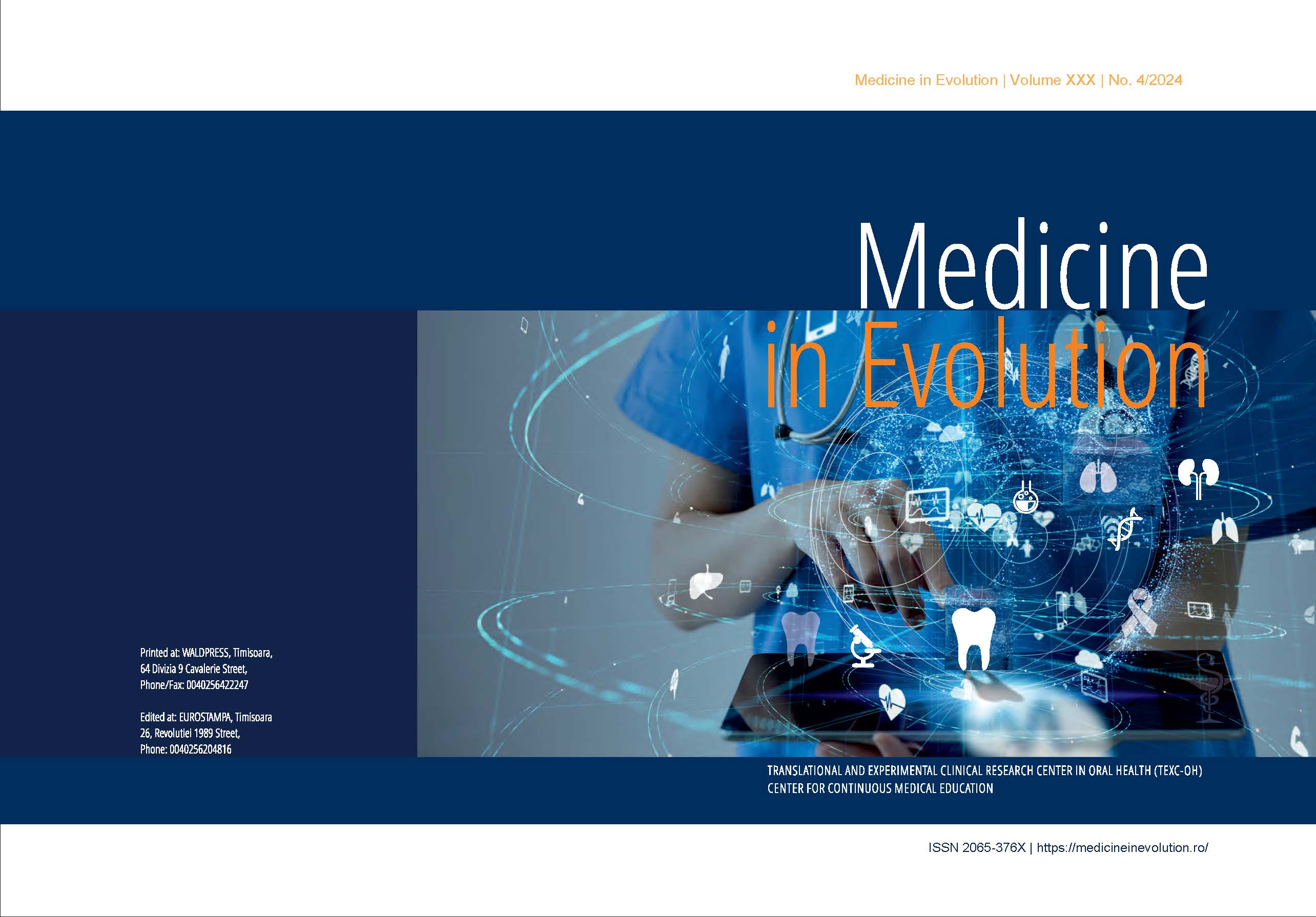Dan Lolos
Faculty of Dental Medicine, “Victor Babeș” University of Medicine and Pharmacy Timișoara, Eftimie Murgu Sq. No. 2, 300041 Timișoara, Romania;
Sorin Gheorghe Mihali
Department of Prosthodontics, Faculty of Dentistry, “Vasile Goldis” Western University of Arad, 94 Revolutiei Blvd., 310025 Arad, Romania.
Adrian Jantea
Faculty of Dental Medicine, “Victor Babeș” University of Medicine and Pharmacy Timișoara, Eftimie Murgu Sq. No. 2, 300041 Timișoara, Romania; Department of Prosthodontics, Faculty of Dentistry, “Vasile Goldis” Western University of Arad, 94 Revolutiei Blvd., 310025 Arad, Romania.
Loredana Mitariu
Department IV of Dental Medicine and Nursing, Faculty of Dentistry, University of Sibiu “Lucian Blaga“ (ULBS), Sibiu, Lucian Blaga 2A, Romania.
Mihai Mitariu
Department IV of Dental Medicine and Nursing, Faculty of Dentistry, University of Sibiu “Lucian Blaga“ (ULBS), Sibiu, Lucian Blaga 2A, România.
Bogdan Antonio Lolos
Faculty of Medicine, “Vasile Goldis” Western University of Arad, 94 Revolutiei Blvd., 310025 Arad, Romania.
Liliana Porojan
Center for Advanced Technologies in Dental Prosthodontics, Department of Dental Prostheses Technology (Dental Technology), Faculty of Dental Medicine, “Victor Babeș” University of Medicine and Pharmacy Timișoara, Eftimie Murgu Sq. No. 2, 300041 Timișoara, Romania.
Roxana Oancea
Department of Preventive and Community Dentistry, Faculty of Dental Medicine, “Victor Babeş” University of Medicine and Pharmacy, 300041 Timişoara, Romania; Translational and Experimental Clinical Research Centre in Oral Health, Department of Preventive, Community Dentistry and Oral Health, University of Medicine and Pharmacy “Victor Babes”, 300040 Timisoara, Romania
Abstract
In this case report, the application of complete esthetic and function-centric diagnostic approach employing the wax up approach for anterior and full arch rehabilitation is described. The wax-up served as a crucial diagnostic tool, facilitating fine adjustments and helping to prevent or correct potential clinical issues that could emerge during the restoration process. Thus, when the bipupillary line, the bicommissural line and the facial midline were connected to each other the final restorations both provided esthetic balance and biological compatibility. Lithium disilicate proved to be a durable material and aesthetically pleasing, both of which will enhance the patient’s satisfaction. This case is a good example of the use of wax-up in complex dental rehabilitations and reinforces the understanding as to how effective this technique can be in providing consistency in treatment delivery and the aesthetic outcomes.

